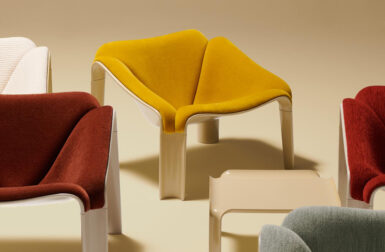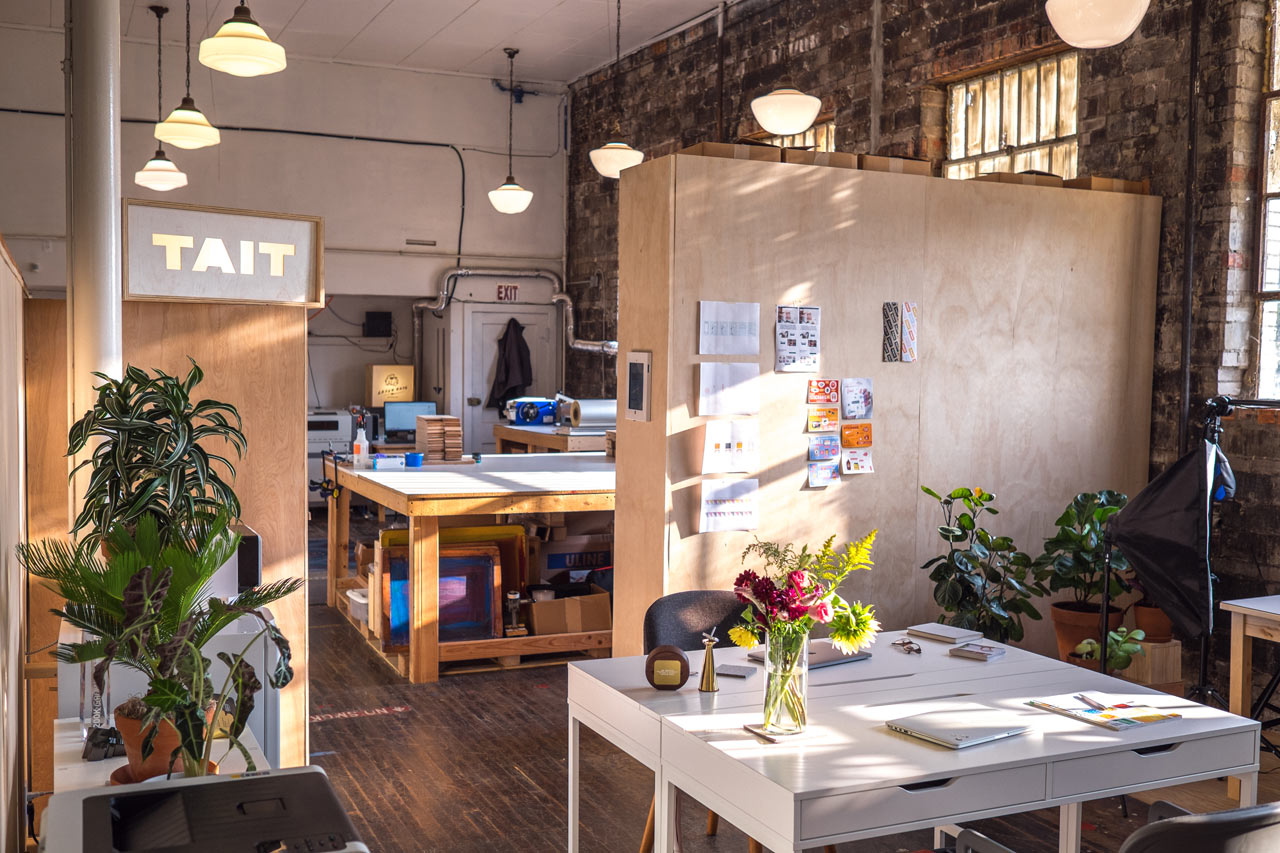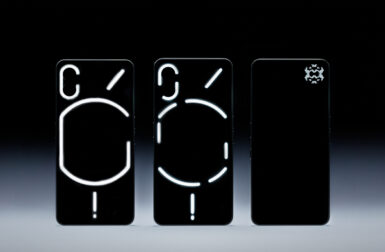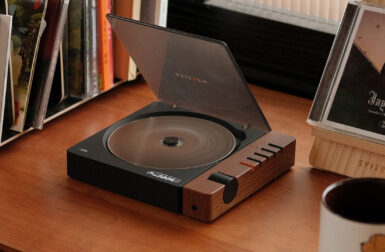September kicked off our Coast to Coast series with Design Milk where we, Colony, a NY-based community of independent furniture, lighting, textiles and objects designers, set out to explore the United States in the name of design, discovery and inspiration. Our travel itinerary was set to discover new talent and expressions of American design, art and craft. Up first in the series was a visit to America’s Motor City; Detroit, MI.
Known for its contributions to music (including the late and great Aretha Franklin), architecture, and art the city of Detroit felt like a weighty first stop in the Coast to Coast series with an opportunity to explore the exciting projects and burgeoning business ventures rumored to be unfolding. Our forty-eight hours in Detroit were spent synthesizing the city’s growing developments and their effect on art and design entrepreneurship. This complex effect proved best mapped through the work and collective organization of artists, nonprofits and local design firms.
DESIGN AND DEVELOPMENT GROWTH WITHIN THE CITY
Our whirlwind stay kicked off with a Ladies Design Salon organized by developer Bedrock Detroit and Design Core, the organization behind the 2015 UNESCO “City of Design” designation, where we were presented a tightly curated view of the role design played within the city. The salon style conference featured an array of initiatives cropping up in the complex shuffle of Detroit’s expanding design field, leaving us wondering how such a narrative fit into the fabric of the city as a whole.

Saundra Little (center left) and Karen Burton (center right), of Noir Design Parti, with Knight Foundation representatives accepting Knight Arts Challenge Award \\\ Photo: Knight Foundation
Where better to learn about said fabric than through the experiences of its inhabitants, and, in a city whose population is 80% black, we felt especially drawn to initiatives such as Noir Design Parti and 400 Forward led by local African American women. The mission of Noir Design Parti, co-founded by Saundra Little and Karen Burton, is to document the professional journeys and creative works of Detroit’s black architects through a series of videos, photographs, maps and tours. By archiving this previously undocumented work, Noir Design Parti hopes to explore and educate the public on the ways in which black architects shaped the physical landscape and cultural identity of Detroit.
Tiffany Brown’s 400 Forward sets its sight on the future of the field; striving to bring more girls into the profession of architecture with a focus on minority women. The initiative’s name is derived from a 2017 milestone when the 400th black woman became licensed as an architect out of the 113,000 licensed architects in the country. The organization is currently looking for sponsors to match it’s $50,000 grant from the Knight Foundation.

Exterior image of the Brush Park project by Bedrock \\\ Photo: Bedrock

Exterior image of the Brush Park project by Bedrock \\\ Photo: Bedrock
During the salon, we also heard from the major real estate developer sweeping downtown Detroit, allowing us to better navigate the variegated weave of communities making up the city itself. While Detroit is 138.7 square miles, the vast majority of development money invested into the city has amassed within the 7.2 square miles of its downtown area. With over 100 properties totaling 16 million square feet, Bedrock owns 50% of the buildings in the Central Business District bringing undeniably positive economic benefits to the once struggling downtown. In addition to a host of historically renovated residential buildings, some major projects in the works include the City Modern development at Brush Park and the Shinola Hotel.
ART & DESIGN FOCUSED ENTREPRENEURSHIP
The vast amount of unutilized square footage within the neighborhoods surrounding downtown Detroit, coupled with its longstanding manufacturing history, provides a foothold for creatively activated spaces. Whether in the form of a cooperative workspace or gallery, burgeoning businesses are buoyed by a collective energy that has shaped those now working on a national level – including the renowned furniture company Floyd.
Ponyride, a nonprofit founded within a 30,000 square foot building designed by Smith, Hinchman and Grylls in 1935, activates space by offering it at a low cost to facilitate the growth of small businesses including artists, entrepreneurs, makers, and nonprofits. Interdisciplinary artist Tiff Massey utilizes the subsidized space to create work inspired by African standards of economic vitality in the form of both large-scale and wearable sculptures. Massey will soon be showcasing new work in The Belt, a culturally redefined alley in the heart of downtown curated by Library Street Collective and supported by Bedrock Detroit.
POST is a multi-use space functioning as part open-concept retail store, part shared studio, and part classroom environment for a series of weekend workshops including printmaking and textile dyeing. Curated and directed by Mutual Adoration, POST is housed within a 1940’s U.S. Post Office building and comprised of additional studios including the playful product design company TAIT.
LOCAL FIRM WORKING IN DETROIT
With such a big presence from a single real estate developer and the subsequent threat of homogeneity, independent firms such as LAAVU Studio bring critical perspective to the structure of a developing Detroit. LAAVU Studio has spent the past seven years primarily working on projects in outlying fringe neighborhoods rather than the downtown area. Founding Principal Kaija Wuollet is guided by the ethos that people’s quality of life is improved by experiencing culturally based neighborhoods with strong identities. She believes these identities are best formed through both a respect for historical narrative and an excitement for future innovations.

A LAAVU Studio project, the restaurant Gold Cash Gold \\\ Photo: EE Berger

A LAAVU Studio project, the restaurant Gold Cash Gold \\\ Photo: EE Berger
Located in the historically rich neighborhood Corktown just West of downtown Detroit, the Gold Cash Gold restaurant opened in a rehabilitated pawnshop. Featuring an open kitchen, full bar, and outdoor patio, the restaurant seats 65 people within its dining area. Original details such as the eagle painted hardwood floor are brightened by whitewashed brick and a colorful stained glass grid motif.
The fresh work and passion found on our first stop in the Coast to Coast series functioned as an introduction to the greater narrative of the city. Our two days in Detroit proved to be but a scrape on the surface of a city entangled in its parabolic history and desire to press upward. We were inspired by those working within the city to both preserve and honor the past while making equitable changes for future generations.
Thank you to the Aloft Hotels for kicking off our Coast to Coast tour and making our Detroit trip possible! The Aloft Detroit Hotel is situated inside the historic David Whitney Building which was restored back to its original 1915-era beauty, resulting in a property that combines classic American architecture with the best of modern hospitality.




















